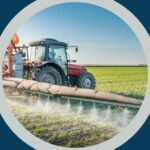Pesticide Device Regulations in Canada
By: Deeksha Chahal, REGULATORY AFFAIRS SPECIALIST, email
The Pest Control Products Act (PCPA) is a Canadian law that regulates the manufacture, importation, sale, and use of pest control products. Among these, ultraviolet (UV) radiation-emitting and ozone-generating devices are of particular interest, as they have grown in popularity for their use in disinfection and pest control. However, their effectiveness and safety have been subjects of scrutiny, leading to specific regulatory measures under the PCPA. While the country has its own regulatory framework, there are several overlaps and shared principles with international bodies, such as the U.S. Environmental Protection Agency (EPA). Understanding these regulations, including EPA registered establishment requirements and child-resistant packaging mandates, is essential for anyone involved in the production, distribution, or use of pesticide devices in Canada. This blog explores the regulatory framework governing pesticide devices in Canada.
Understanding UV Radiation-Emitting Pesticide Devices
UV radiation-emitting devices use ultraviolet light to kill or inactivate microorganisms such as bacteria, viruses, and fungi. These devices are commonly found in water purifiers, air sanitizers. The effectiveness of these devices depends on several factors, including the wavelength of the UV light, the intensity of the radiation, and the exposure time.
There are three main types of UV radiation: UVA, UVB, and UVC. UVC, with the shortest wavelength, is the most effective at disinfection but is also the most harmful to human health. Therefore, devices that emit UVC radiation must be carefully regulated to ensure they are safe for use around people.
Ozone-Generating Pesticide Devices
Ozone-generating (or ozone generators) devices produce ozone, a powerful oxidant, to disinfect air, water, and surfaces. Ozone works by breaking down the cell walls of microorganisms, effectively killing them. However, ozone is also a lung irritant and can be harmful to humans, particularly those with respiratory conditions. As a result, the use of ozone-generating devices is subject to strict regulations.
Regulatory Framework Under the PCPA
In Canada, the regulation of pesticide devices falls under the purview of the Pest Management Regulatory Agency (PMRA), a branch of Health Canada. The PCPA sets out the requirements for the registration, evaluation, and approval of pest control products, including UV radiation-emitting and ozone-generating devices. They ensure that any device designed to control microbial pests, such as bacteria or viruses, meets the necessary standards to protect human health and the environment. Manufacturers of these devices must demonstrate that their products are effective for the intended use and that they do not pose an unreasonable risk to human health or the environment. Along with that, Companies involved in the global trade of pesticide devices must also navigate the complex landscape of import and export requirements and meet both Canadian and international guidelines.
The registration process involves a rigorous scientific evaluation by the Pest Management Regulatory Agency (PMRA), a branch of Health Canada. This evaluation assesses the efficacy of the device in controlling pests, as well as any potential health risks associated with its use. If a device is found to be effective and safe, it is granted a registration number, which must be displayed on the product label.
Registration Requirements for Pesticide Devices
In order to obtain pre-market registration for UV and ozone-generating devices, a registration application must be submitted to the PMRA that includes, but is not limited to, the following information:
- Labelling that complies with PMRA requirements;
- Certification for devices that contain electronic components;
- Exposure assessments; and
- Efficacy support.
It is crucial that any pesticidal claims on the product labelling can be substantiated with product performance (efficacy) data produced using the product as described in the directions for use. Many pesticide devices, particularly those intended for household use, must feature child-resistant packaging to prevent accidental exposure. This is especially crucial for products that may be hazardous if ingested or misused by children. Devices such as air treatment units, which aim to purify indoor air and reduce the spread of airborne pathogens, are becoming more common. However, these devices are subject to the same rigorous testing and approval processes as other pesticide devices to ensure their effectiveness and safety.
Health and Safety Considerations
Due to the potential health risks associated with UV radiation and ozone, the PCPA includes specific guidelines for labeling and marketing these devices. For example, devices that emit UVC radiation must include warnings about the dangers of exposure to the skin and eyes. Similarly, ozone-generating devices must carry warnings about the potential respiratory risks and should not be marketed for use in occupied spaces.
The PMRA also monitors the market for non-compliant products and has the authority to take enforcement action against manufacturers who do not adhere to the regulations. This can include fines, product recalls, or even criminal charges in cases of serious violations.
Conclusion
The regulation of pesticide devices in Canada is a vital aspect of the country’s pest management strategy. From pre-market registration to establishment registration and adherence to import and export requirements, every stage of the process is critical for ensuring compliance. By ensuring that these devices meet stringent safety and efficacy standards, the PMRA helps protect Canadian consumers and the environment from potential harm. As the market for pesticide devices continues to grow, ongoing regulation and surveillance will be essential to maintaining the safety and effectiveness of these products.
FAQ: Pesticide Device Regulations in Canada
1. What is the Pest Control Products Act (PCPA)?
The PCPA is Canadian legislation that regulates the manufacture, importation, sale, and use of pest control products, including UV radiation-emitting and ozone-generating devices. Learn more about what pesticide are in our What is a Pesticide? blog.
2. What are UV radiation-emitting pesticide devices?
UV radiation-emitting devices use ultraviolet (UV) light to kill or inactivate microorganisms like bacteria and viruses. Commonly used in water purifiers and air sanitizers, these devices must be carefully regulated, especially those emitting UVC light, which is highly effective but harmful to human health.
3. What is required to register a pesticide device in Canada?
To register a pesticide device, manufacturers must submit an application to the PMRA that includes product labeling, certification for electronic components, exposure assessments, and efficacy data. Devices must also comply with child-resistant packaging requirements if necessary. Learn more about the Pesticide Management Regulatory Agency and how Dell Tech can support you in registering your pesticide.
4. How does the PMRA ensure pesticide devices are safe?
The PMRA performs rigorous evaluations to assess both the efficacy and safety of pesticide devices. This process includes reviewing how well the device controls pests and identifying any potential health risks. Devices that meet these standards receive a registration number, which must be displayed on the product label.
5. What are the health and safety guidelines for UV and ozone devices?
UV devices, particularly those emitting UVC radiation, must have warnings about potential skin and eye damage. Ozone-generating devices require warnings about respiratory risks and should not be used in occupied spaces due to the potential harm from ozone exposure.
How Dell Tech Can Help
Dell Tech Laboratories offers expert support for the regulation and registration of pesticide devices. We recognize the challenges posed by the constantly evolving pesticide regulations and are here to help simplify the compliance process for you.

Reach out to us with any questions or concerns, and let our team guide you through a seamless compliance experience!
DELL TECH HAS PROVIDED PROFESSIONAL, CONFIDENTIAL CONSULTING SERVICES TO THE SPECIALTY CHEMICAL INDUSTRY IN CANADA, THE USA, EUROPE AND ASIA FOR THE LAST 40 YEARS.





